Surprising Secrets Of The Mona Lisa Unveiled
If you are an art lover, you’ve heard of the Mona Lisa. Leonardo da Vinci painted the portrait in the 16th century – one of the world’s most famous paintings.
However, the Mona Lisa is more than a captivating artwork. It is shrouded in secrets, but there’s one mystery that beats the rest. Curious about what it is? Keep reading!
The Renaissance Period And The Mona Lisa
After the Middle Ages, the Renaissance ushered Europe into a cultural, artistic, political, and economic rebirth. In 1503, Leonardo da Vinci began working on the Mona Lisa.
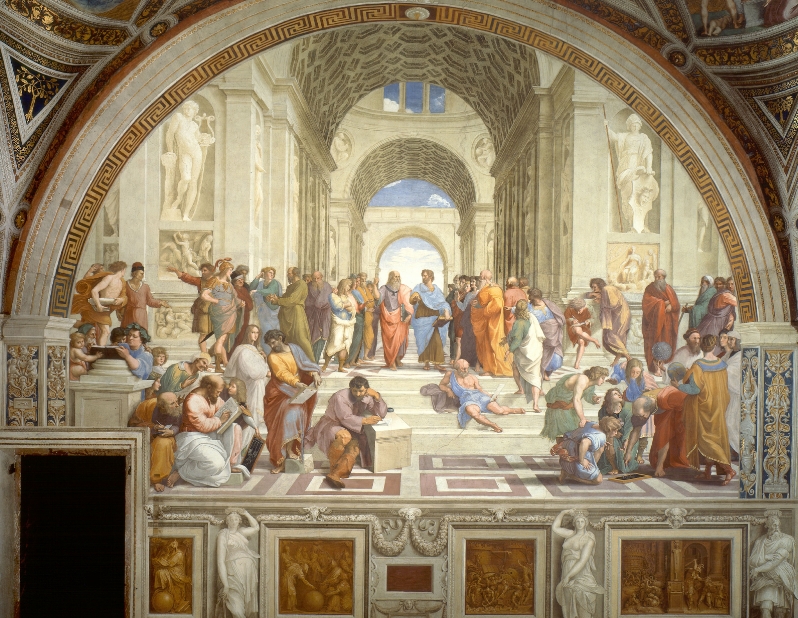
Source: Wikimedia Commons
A wealthy Florence merchant, Francesco del Giocondo, asked the famous painter to paint a portrait of his wife, Lisa Gherardini (aka Lisa del Giocondo). It took da Vinci several years to paint the image.
The Mona Lisa Was Never Completed
Da Vinci completed a significant part of the Mona Lisa between 1503 and 1507. Between 1507 and 1519, he added several details to the portrait.
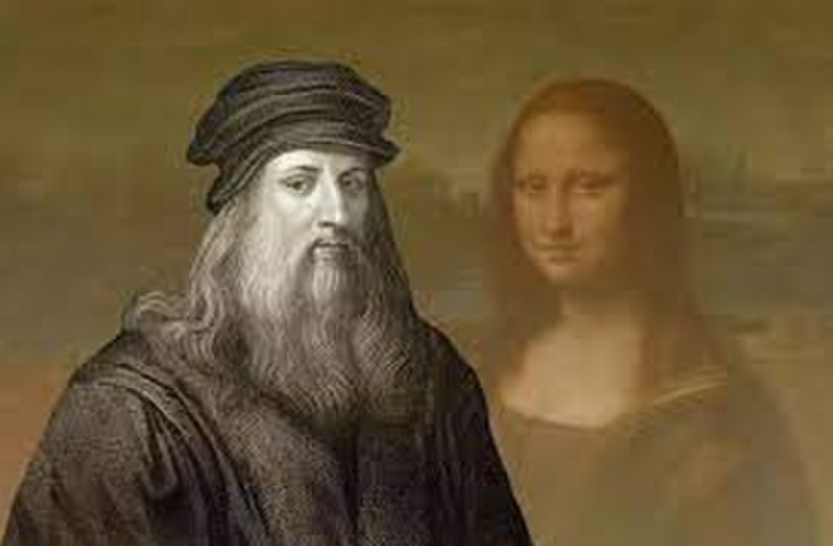
Source: Wikimedia Commons
But sadly, he could not put in the finishing details before he passed away in 1519. Also, da Vinci never gave the portrait to the del Giocondo family. The reason remains unknown and will never be uncovered.
Several People Have Owned the Mona Lisa
After da Vinci died, his favorite apprentice Salai took ownership of the Mona Lisa. Later, the King of France, Francis 1, bought the Mona Lisa and exhibited it at the Palace of Fontainebleau.
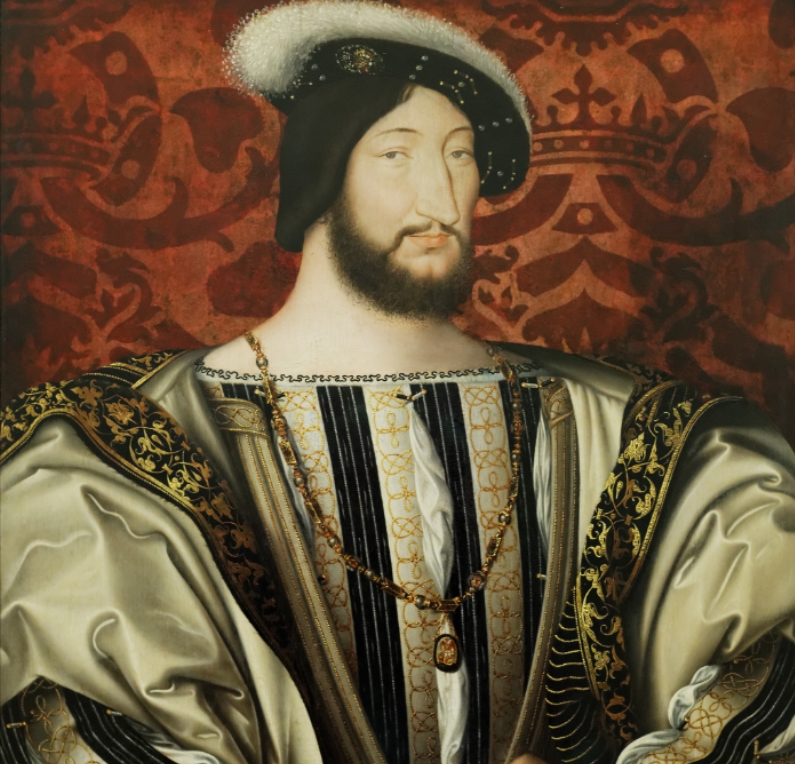
Source: Wikimedia Commons
The palace was the Mona Lisa’s home for over 100 years until Louis XIV took it to the Palace of Versailles. Then, at the French revolution’s end, the Louvre became its new home.
The Portrait Returned To Italy
Later, toward the end of the 19th century, Italian museum staff, artist, and thief Vincenzo Peruggia stole the portrait from the Louvre and took it to Italy. However, he was caught when he tried to sell it.
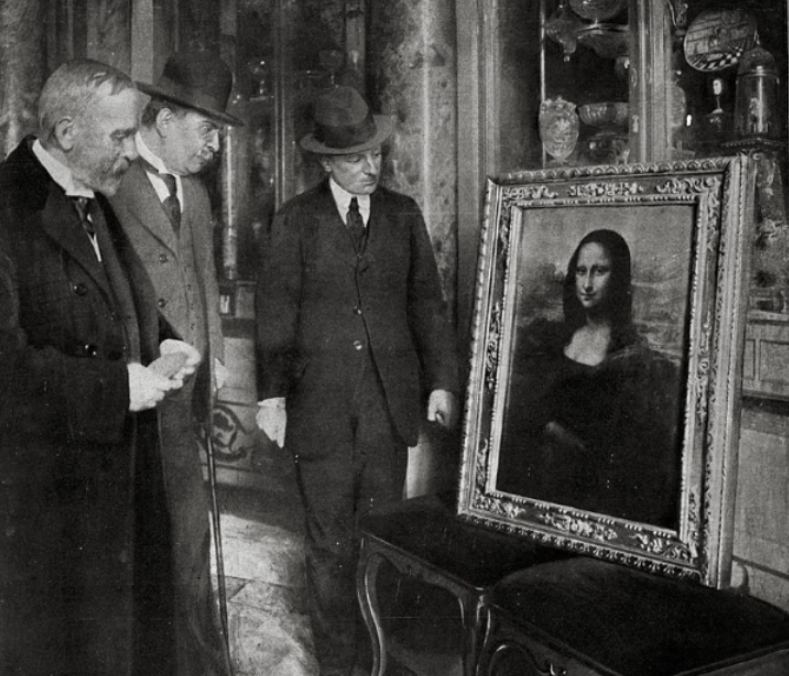
Source: The Telegraph/Wikipedia
In 1914, the Mona Lisa was returned to the Louvre and has been restored several times. Also, it is subject to several debates because of its many secrets.
Is The Mona Lisa Really The Portrait Of Lisa Gheradini?
One of the debates on the Mona Lisa is whether it was actually the portrait of Lisa Gheradini. The arguments were put to rest in 2005 when a German librarian at the University of Heidelberg, Dr. Armin Schelter, confirmed the identity of the Mona Lisa.
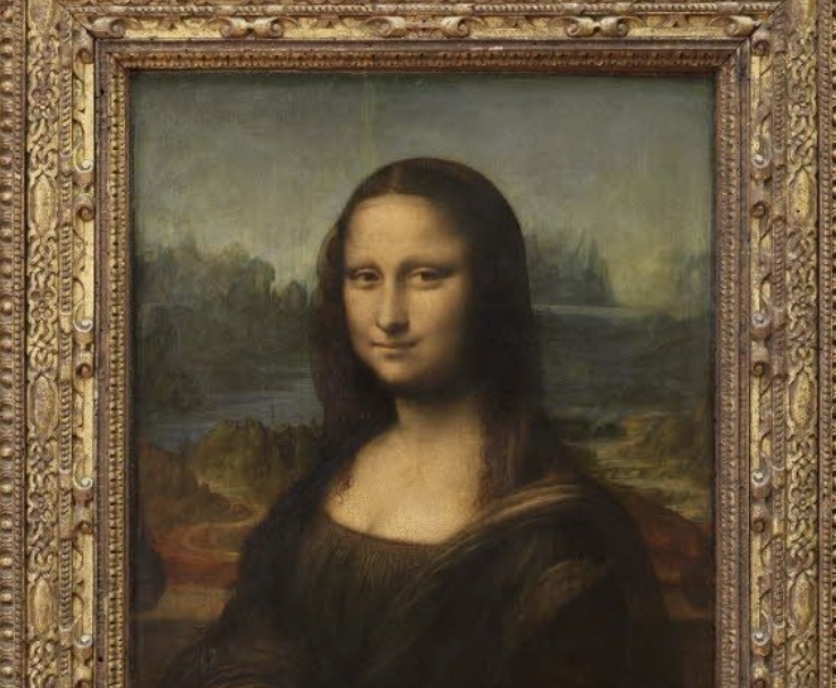
Source: Louvre.fr/Pinterest
The librarian made a positive identification by reading notes scribbled on the margins of a book belonging to Agostino Vespucci.
The Mona Lisa And The Sforza Family
Another theory about Mona Lisa’s identity linked her to a powerful family in Renaissance Italy, the Sforza family. The proponents of this theory believe that the Duke of Milan, Ludovico Sforza, commissioned the painting.
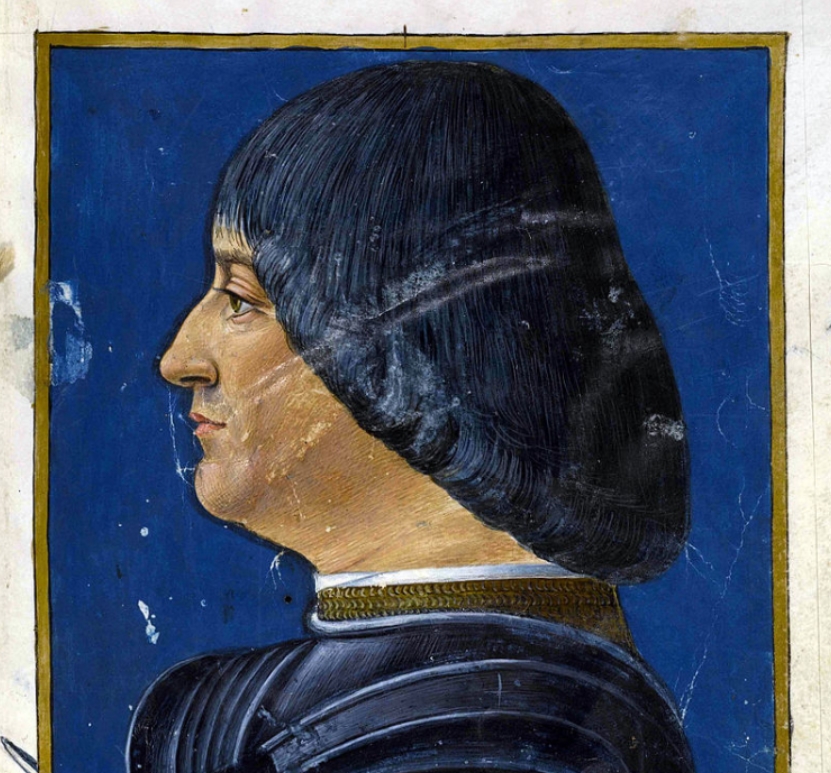
Source: Wikimedia Commons
According to the proponents, the Duke requested the painting to celebrate his nephew’s marriage to a Gheradini family member. Also, in the 16th century, a Sforza family member owned the portrait.
Mona Lisa Revealed
The debate on the Mona Lisa’s identity was put to rest in the 2006 book Mona Lisa Revealed. In it, Giuseppe Pallanti wrote about Francesco del Giocondo’s last will and testament.

Source: Wikimedia Commons
According to Guiseppe, in the will, Franceso’s wife was referenced as ‘Mona Lisa, his beloved wife.’ Although the mystery of Mona Lisa’s identity was solved, it is just one of the many puzzles about the painting.
Mona Lisa’s Hidden Images
Another famous theory about the Mona Lisa is that the portrait has hidden images. People who have viewed the picture claimed they saw a hidden skull in the landscape. There are also claims that Mona Lisa’s eyes have a hidden code.
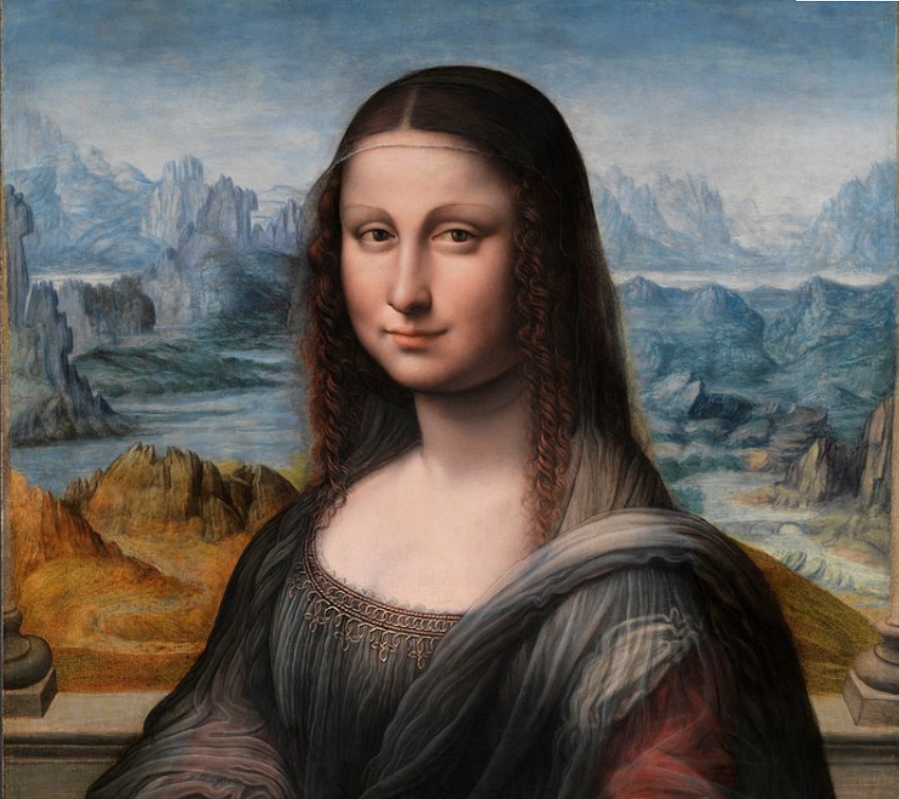
Source: The Prado Museum La Gioconda/Wikipedia
However, these theories have no basis, and as such, many art historians disregarded them. But other hypotheses have validity and have been backed with proof.
Mona Lisa Has An Eyebrow
One of the long-standing puzzles about the Mona Lisa is the absence of eyebrows and eyelashes. But in 2007, French engineer Pascal Cotte revealed that Da Vinci did give the image an eyebrow.
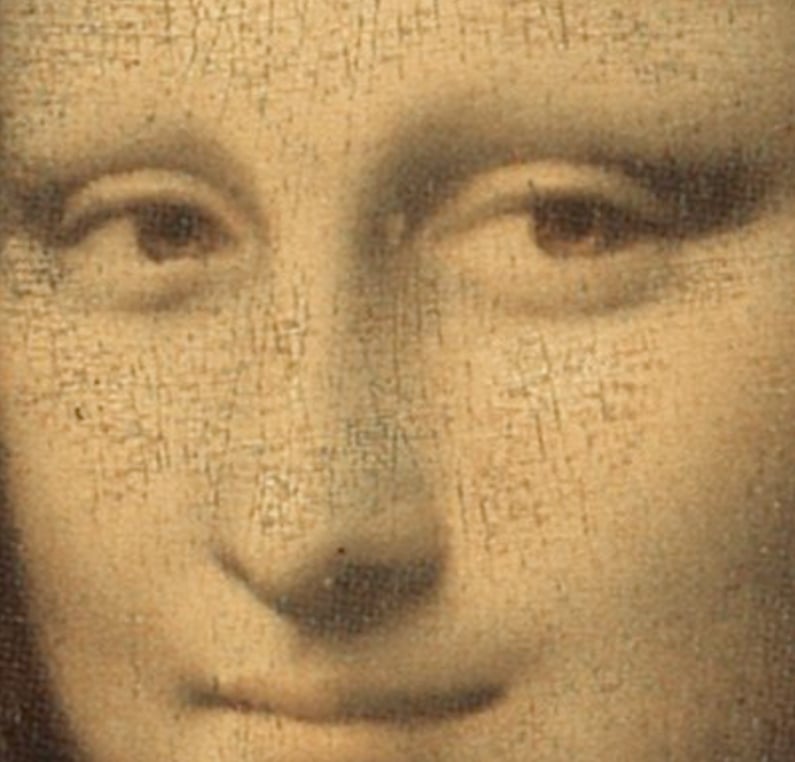
Source: Hope in Paris/Pinterest
He invented the 240-megapixel multi-spectral imaging camera that uses 13 wavelengths of ultraviolet light to infrared. Pascal used the camera to scan the painting and made a fantastic discovery that confirmed what he had always suspected.
A Single Brush Stroke
After zooming in on the Mona Lisa’s left eye, the engineer found a single brush stroke in the eyebrow region. Pascal always thought it was illogical for the image not to have any eyebrows or eyelashes.
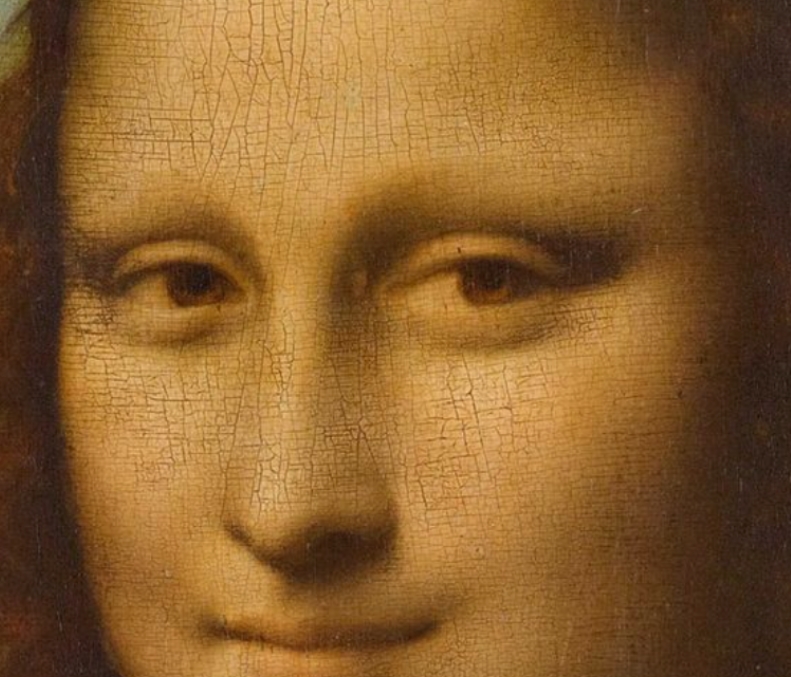
Source: Draw Paint Academy/Pinterest
In his words, “I am an engineer and scientist, so for me, [everything] has to be logical. It was not logical that Mona Lisa does not have any eyebrows or eyelashes.”
The Puzzle Of The Right Arm Position
Pascal also solved the puzzle about the positioning of Mona Lisa’s right arm. The right arm lies across the image’s stomach, and many artists have questioned why da Vinci painted it that way.
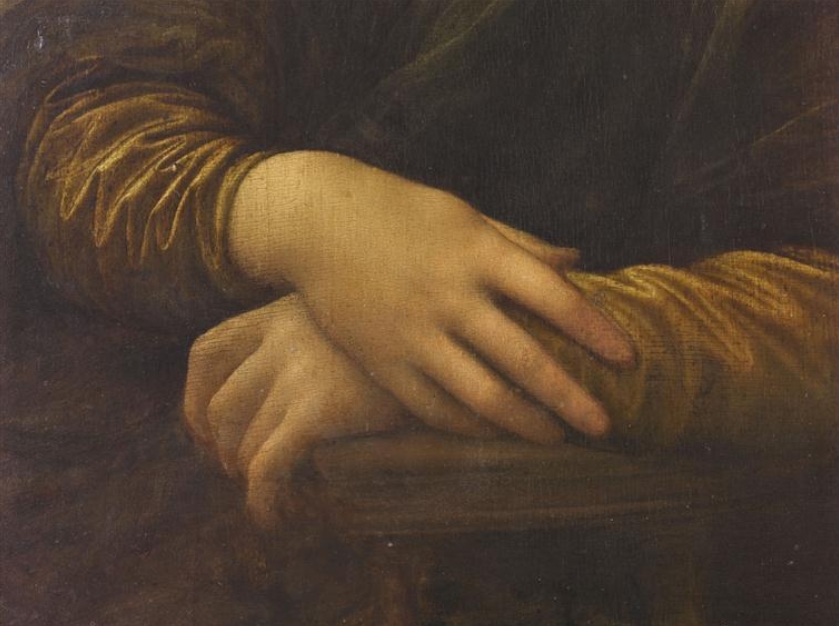
Source: Wikimedia Commons
The engineer discovered that the pigment behind Mona Lisa’s right wrist matched perfectly with the painted cover draped across her knee. Also, he discovered the forearm and wrist held up a blanket, hence the positioning.
Mona Lisa’s Dress Has Lace
Pascal said, “The wrist of the right hand is up high on the stomach. But if you look deeply in the infrared, you understand she holds a cover with her wrist.” He also discovered that there was lace on Mona Lisa’s dress.
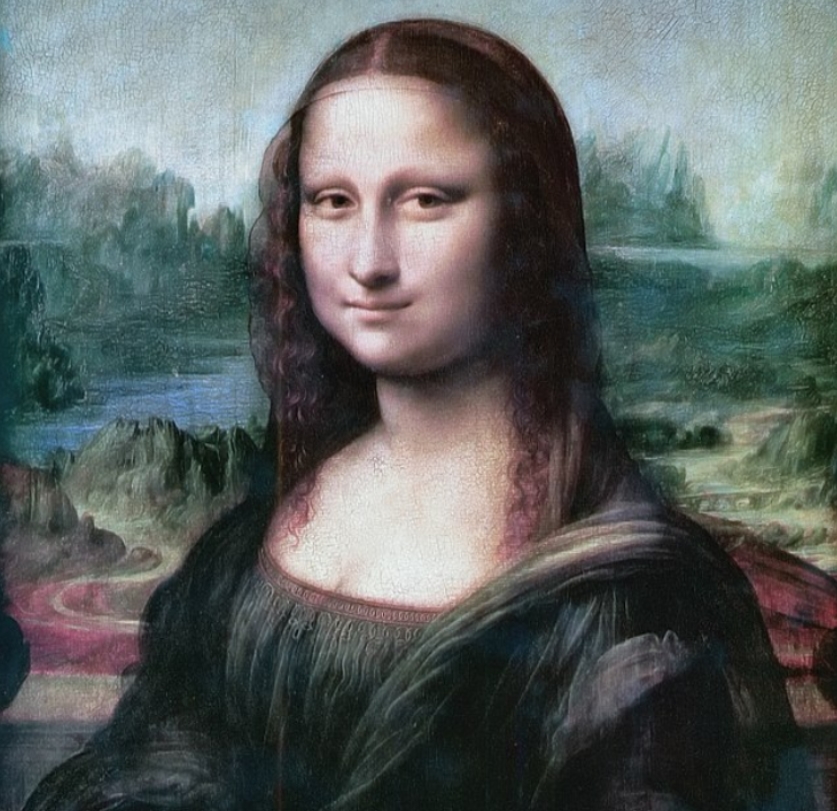
Source: Wikimedia Commons
But the revelations did not end there. The engineer uncovered that the transparency of the veil showed da Vinci first painted a landscape.
Mona Lisa Was Not Sick
The painter then used transparency techniques to paint the veil on top. Also, Pascal found that da Vinci did not finish the left finger, and the elbow underwent repair after a rock was thrown at the painting in 1956.
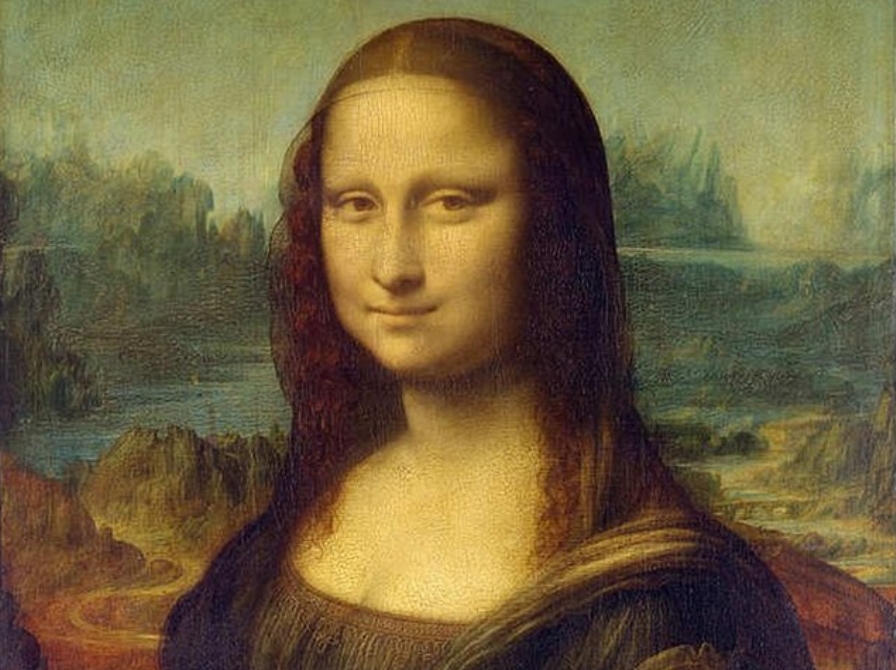
Source: Wikimedia Commons
Furthermore, the engineer discovered that the blotch mark on the side of Mona Lisa’s eye was from a varnish accident. The discovery countered the claims that Mona Lisa was sick.
Heightened Beauty And Mystique
Also, Pascal ended the controversy on the material da Vinci painted the Mona Lisa on. He revealed that the portrait was painted on an uncut poplar board. He added that staring at the enlarged infrared image of the Mona Lisa heightened her beauty and mystique.
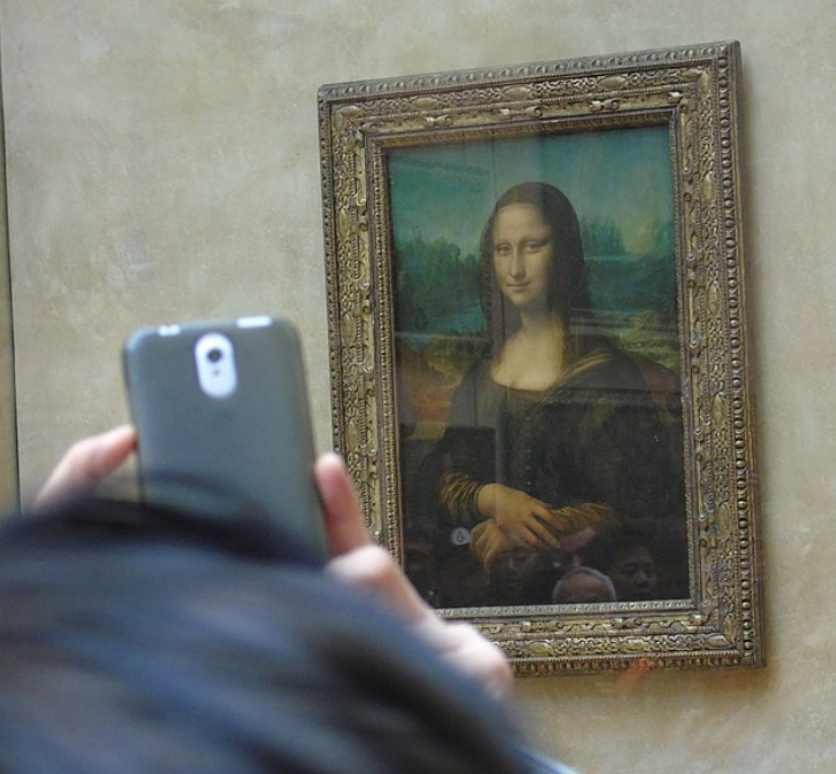
Source: Wikimedia Commons
The engineer said, “If you are in front of this huge enlargement of the Mona Lisa, you understand instantly why Mona Lisa is so famous.”
The Mystery Of The Mona Lisa’s Smile
Another mystery that the Mona Lisa is famous for surrounds her smile. Those who have viewed the painting have given different interpretations of it. Some claimed it was a sign of happiness, while others believed it showed sadness or melancholy.
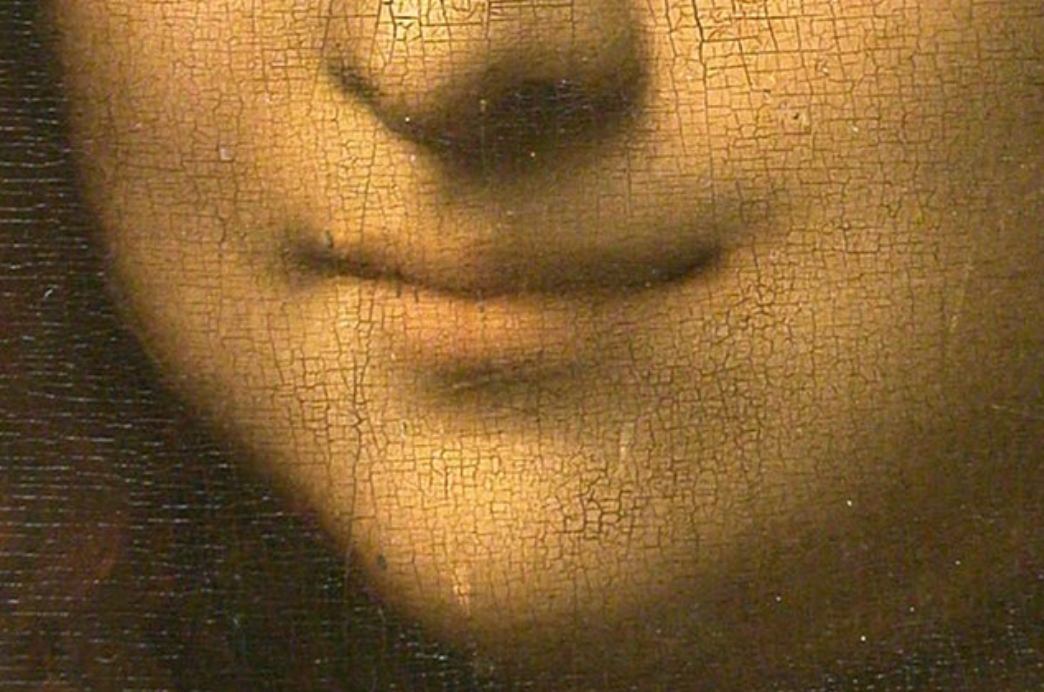
Source: Wikimedia Commons
The truth is, it all depends on how the viewer sees the portrait. If you stare at the portrait’s eye directly, the fovea part of the eye will focus on color while the peripheral vision glimpses the lips.
The Smile And The Eyes Are Different
Since the peripheral vision cannot distinguish the fine details, it sees the shadows on the Mona Lisa’s cheekbones as a smile. But if you focus on the lips and pay attention to the elements, the smile becomes a frown.
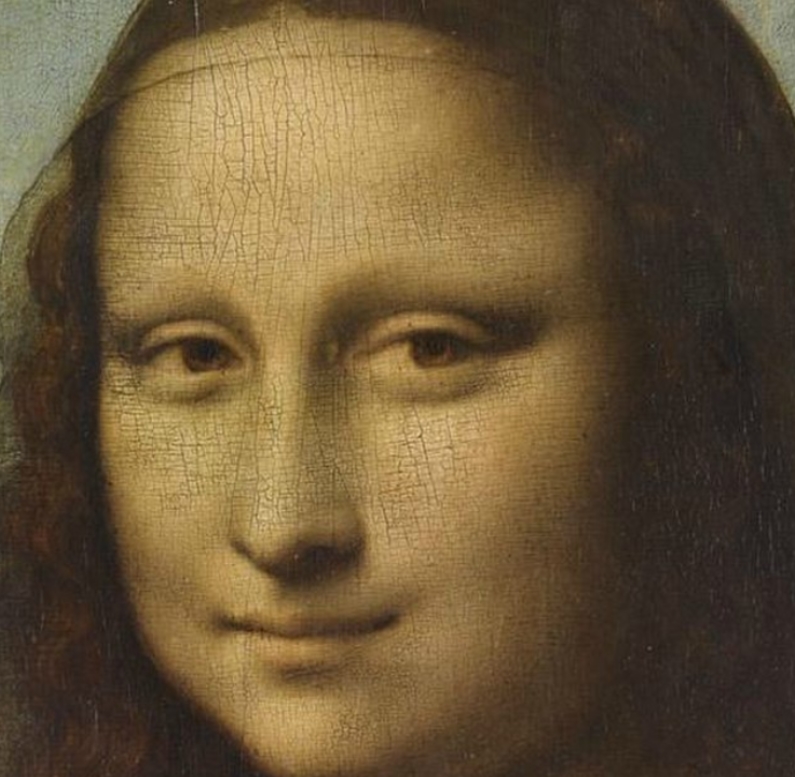
Source: Wikimedia Commons
Also, Pascal noted that “The face of Mona Lisa appears slightly wider and the smile is different, and the eyes are different. The smile is more accentuated, I would say.”
The Mystery Of The Landscape
The truth of the emotion Mona Lisa’s smile portrays remains in the eyes of the beholder. But beyond the smile, there’s also the mystery of the landscape.
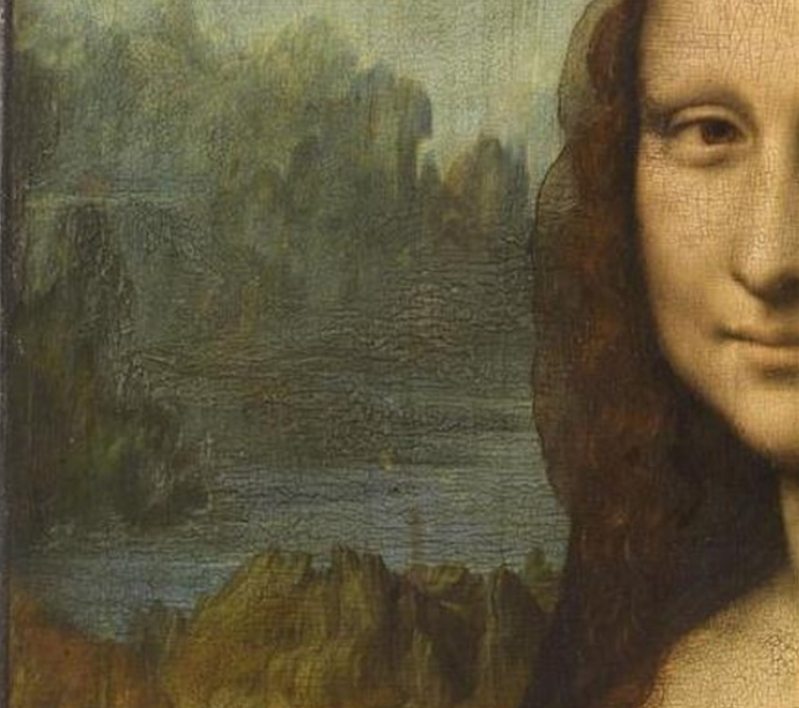
Source: Wikimedia Commons
The landscape covers a significant part of the portrait’s background and features a river, lake, bridge, and mountains. Many have speculated that the landscape may be a real place in da Vinci’s native Italy.
The Biggest Mystery Yet!
Others see the landscape as a representation of the journey through life. However, the landscape and the other mysteries discussed so far are not the most shocking about the Mona Lisa.

Source: Attributed to Leonardo da Vinci/Wikipedia
The biggest secret about the painting is an almost identical portrait called the Isleworth Mona Lisa or Isleworth. This twin painting is similar to the Mona Lisa painted by da Vinci, and many believe it belonged to him.
Was The Isleworth Painted Before The Mona Lisa?
According to different theories, da Vinci painted Isleworth before the Mona Lisa. However, there is no solid proof that the painter created it. But to understand how Isleworth came to be, we must return to its beginning.
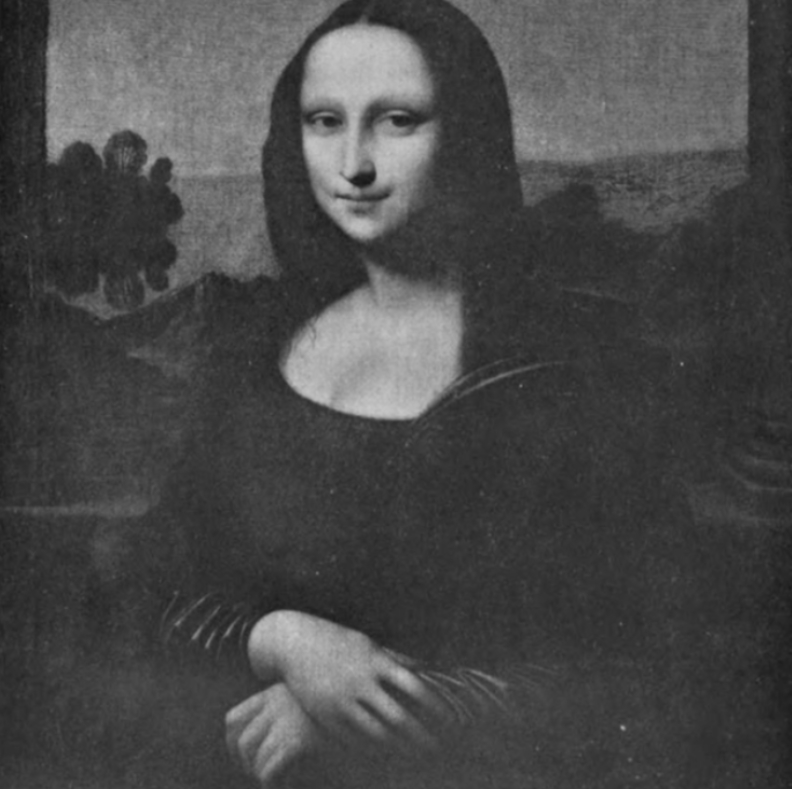
Source: Wikimedia Commons
The Isleworth Mona Lisa belonged to an Italian merchant who bought it from someone who claimed it was the original.
Experts Studied The Isleworth
Years later, Hugh Blaker, an English art collector, saw and bought the painting. He also thought the Isleworth was the original Mona Lisa. Hugh’s father, John R. Eyre, took an interest in the portrait and brought experts to study it.
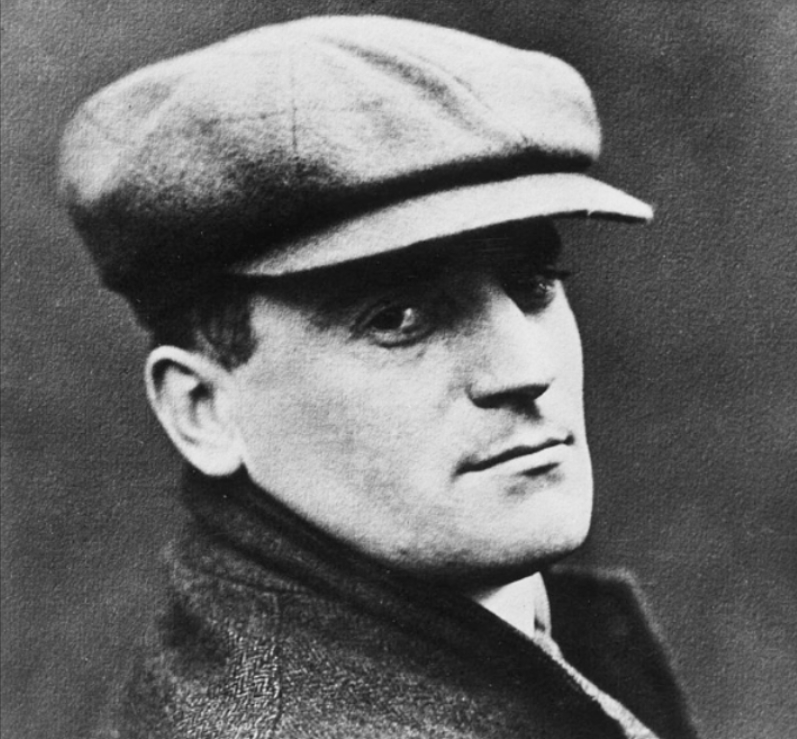
Source: Wikimedia Commons
The experts concluded it was an original da Vinci and a portrait of Lisa Gherardini. They said there were two portraits, and the Isleworth Mona Lisa was likely the first.
Henry F. Pulitzer Also Studied Isleworth
After Hugh, Henry F. Pulitzer became the next owner of Isleworth in 1962 and studied its origins. His discoveries led him to write the book, Where Is the Mona Lisa? In 1966.
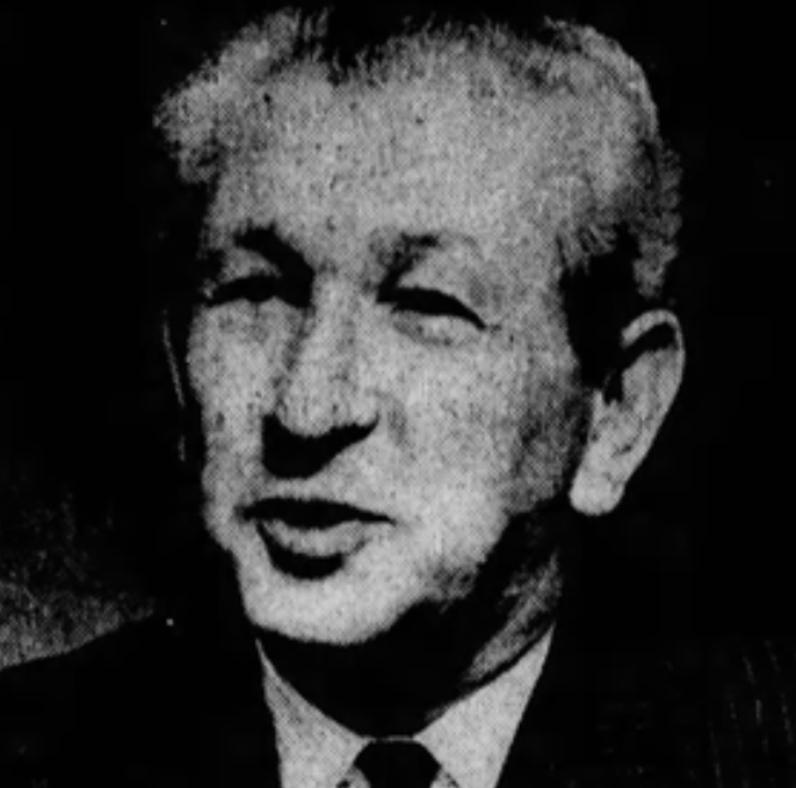
Source: Red Meyer/Wikipedia
In it, the author claimed the Isleworth was the original Mona Lisa. He added that the one viewed in the Louvre was a copy. However, his claims were not believed by experts in the art world.
The Book Did More Harm Than Good
Art historian Jean-Pierre Isbouts said that Henry’s book did more harm than good and that no self-respecting historian would read it. Also, it did not help that Lord Brownlow (Peregrine Francis Adelbert Crust) also claimed to have the original Mona Lisa when Henry released his book.
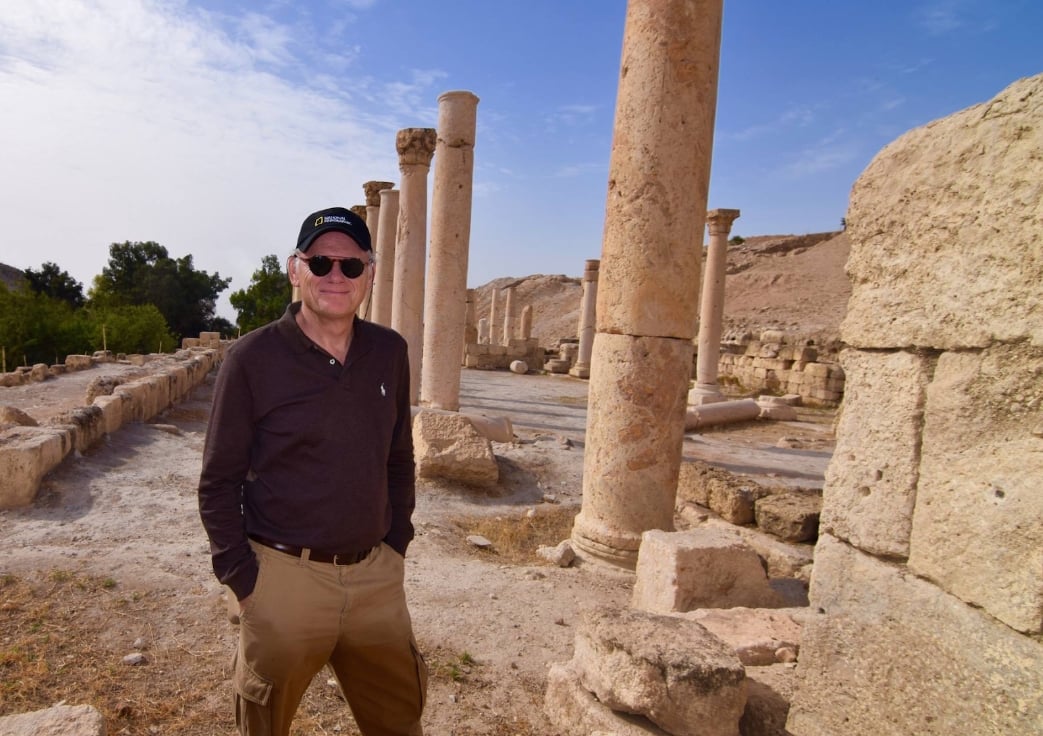
Source: Jean-Pierre Isbouts/Facebook
Lord Brownlow and the author had countless arguments about who owned the real da Vinci painting.
Henry Maintained He Had The Original da Vinci Painting
The two men offered to hold an exhibition in London in 1972 to showcase their paintings. But there is no record that they did, and Henry continued to claim his Isleworth Mona Lisa was the original painting until his demise in 1979.
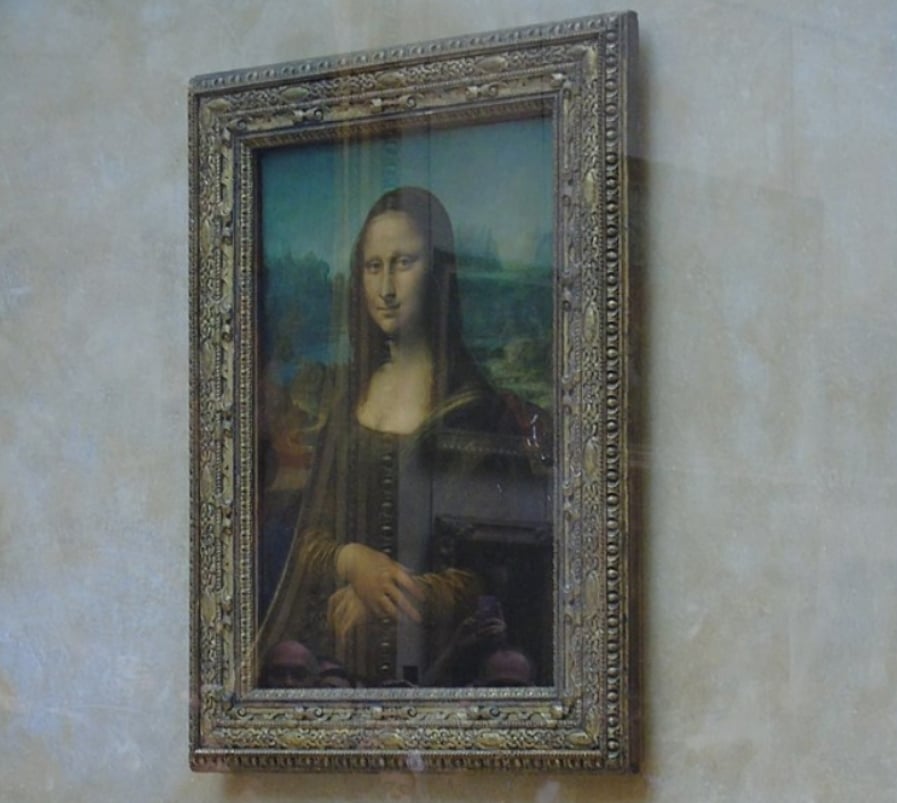
Source: Wikimedia Commons
After he passed away, his will revealed he bequeathed the Isleworth Mona Lisa to his girlfriend. Afterward, no one heard of or saw the painting.
The Isleworth Mona Lisa Disappeared For 30 Years
It was later disclosed that the Isleworth Mona Lisa was in a Swiss bank vault for 30 years. In 2008, the painting reappeared, and this time, in possession of the newly formed Mona Lisa Foundation.
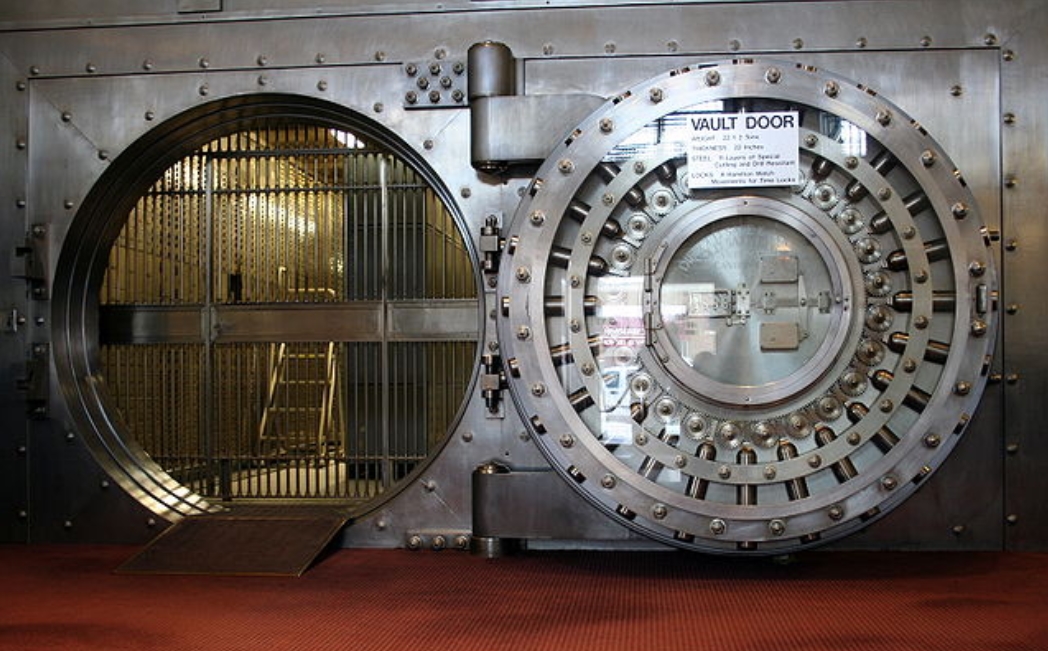
Source: Wikimedia Commons
The foundation was created to study the Isleworth Mona Lisa and determine if it is the original portrait. The vice president, David Feldman, said the foundation had no stake in the artwork.
The Mona Lisa Foundation Exists Only For Research
David added that the foundation exists solely to examine the facts in the most objective way possible. Like the previous owners of the Isleworth Mona Lisa, the foundation believes that the painting belonged to da Vinci.
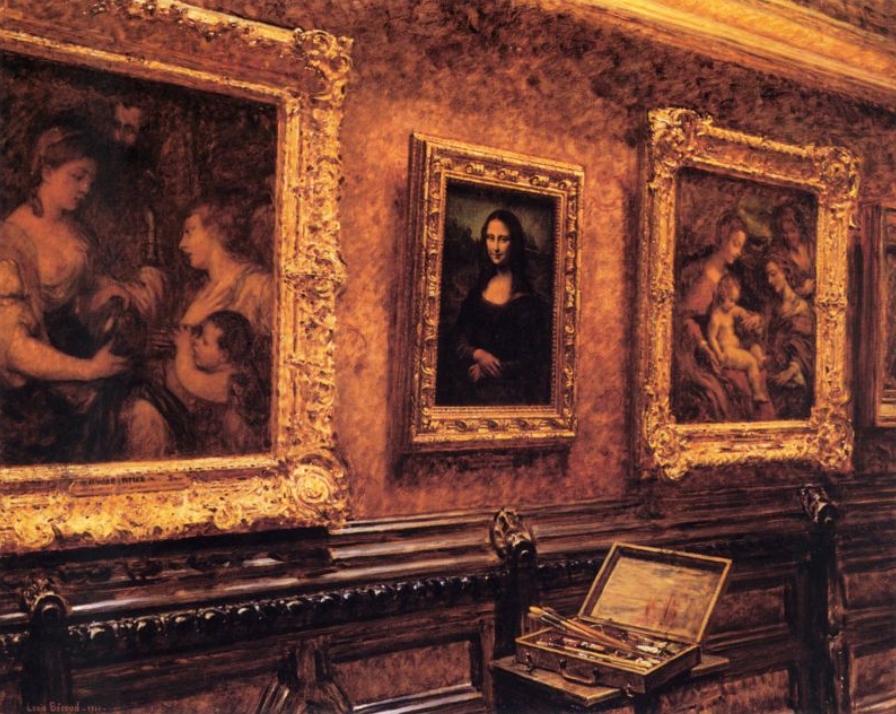
Source: Louis Béroud/Wikipedia
This belief is predicated on the fact that da Vinci was famous for creating two versions of his work. But unlike others who claimed the Isleworth Mona Lisa as the first portrait, the foundation believed it was the second.
Historians Rejected The Theory
While the foundation’s theory made sense, leading art scholars and historians rejected it. Historians believe there is no substance to the claim that the Isleworth Mona Lisa is an original da Vinci painting.
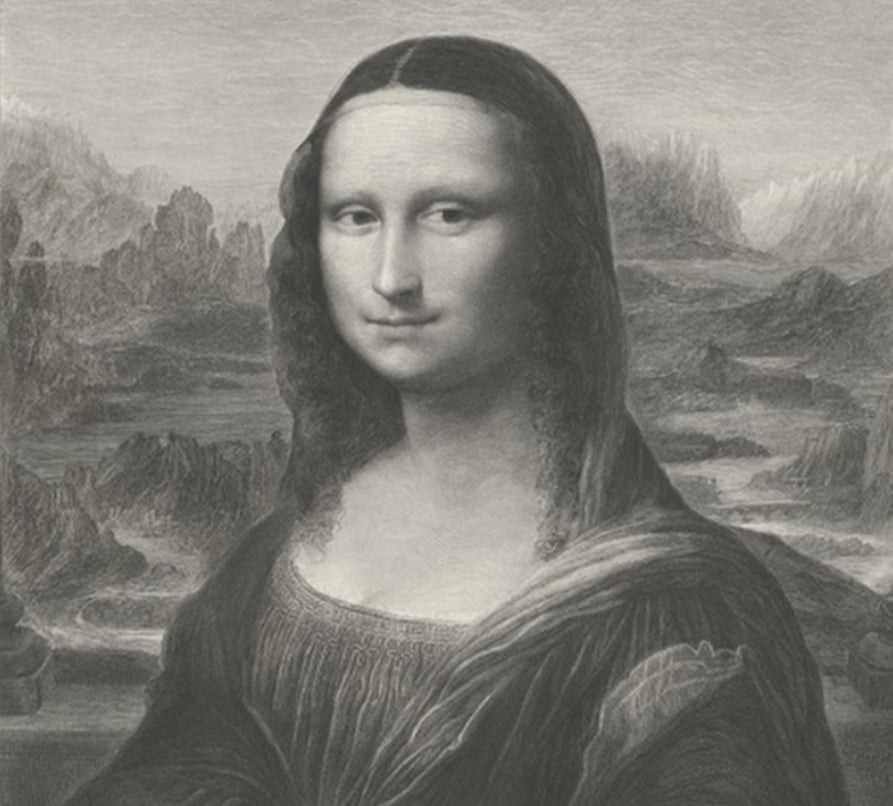
Source: Wikimedia Commons
However, the foundation stuck to the two paintings theory, claiming the second was commissioned a decade after the first by Giuliano de Medici. He was one of da Vinci’s patrons.
Raffaello Recreated The Mona Lisa
Furthermore, the Mona Lisa Foundation considered that Raffaello Sanzio da Urbino sketched the Mona Lisa after seeing it once. In the painting by Raffaello, the image is flanked by two columns.
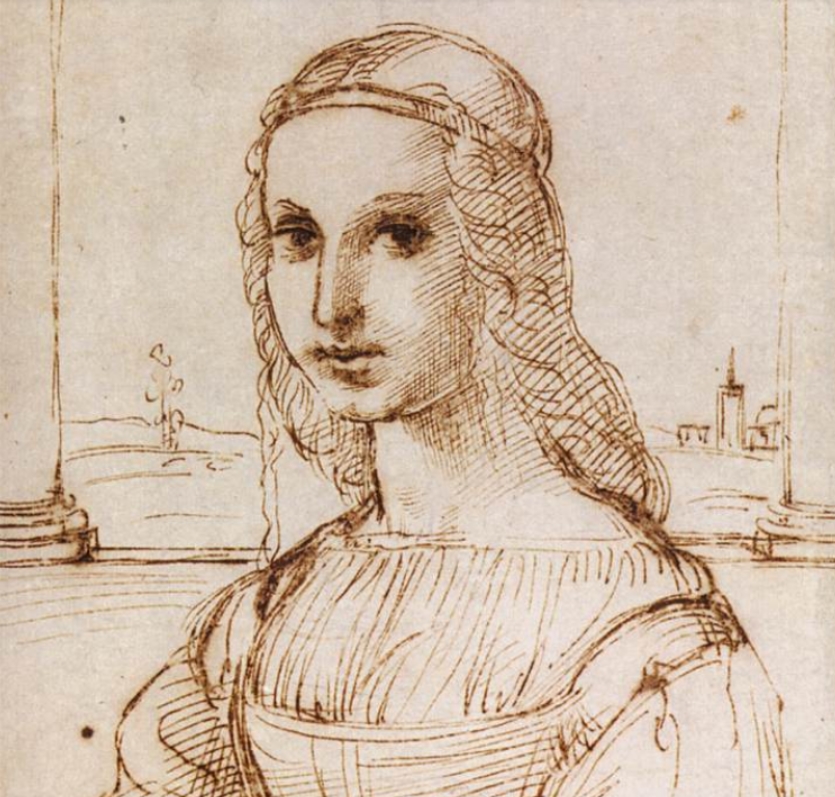
Source: Web Gallery of Art/Wikipedia
The Isleworth Mona Lisa also has similar columns, but it is barely visible in the portrait in the Louvre. The columns only appear in the base of Louvre’s Mona Lisa.
The Age And Wood Debate
Also, the Louvre’s Mona Lisa has never been trimmed, so it can’t be said the pillars were cut off. The foundation used this fact to support its claim of the Isleworth Mona Lisa’s authenticity.
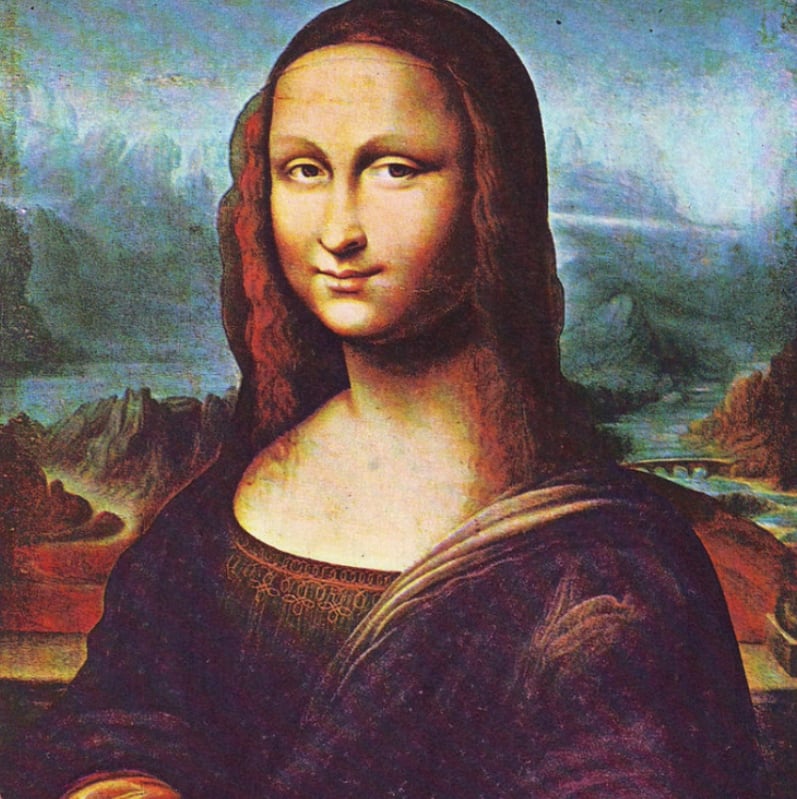
Source: Salai/Wikipedia
Plus, it has been said that the image in the Isleworth painting appears younger than the one in the Louvre. Another argument is that da Vinci mainly painted on wood, while Isleworth is on canvas.
The Evidence Is Inconclusive
But the foundation pointed out that da Vinci also painted on canvas, citing the drapery on linen canvas at the Louvre as an example. The drapery is one of da Vinci’s earlier works in the 1470s.
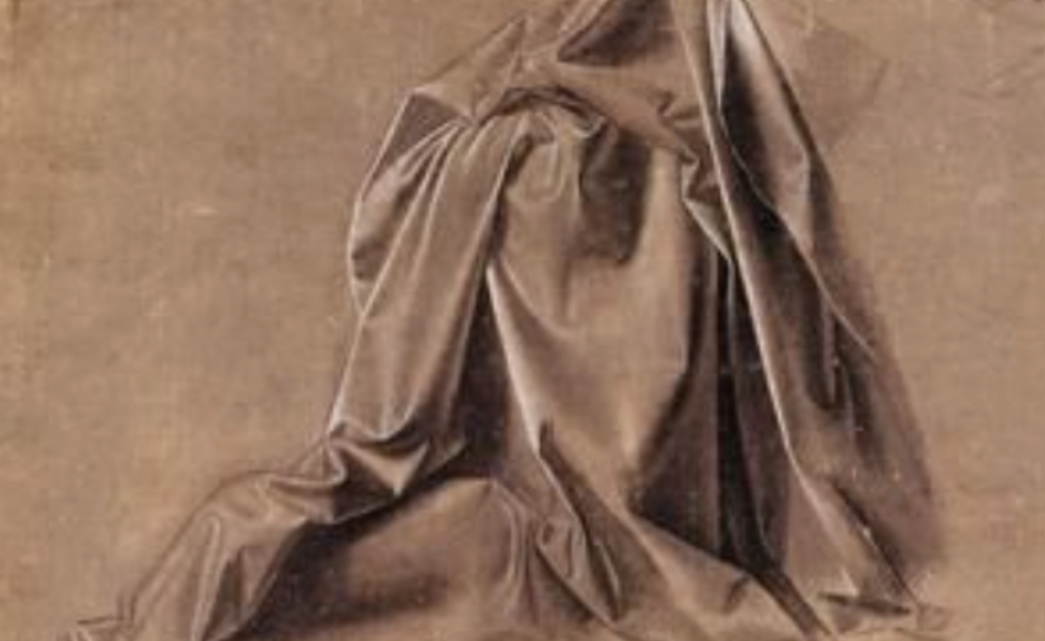
Source: Fr.wahooart/Pinterest
However, this argument, like the rest, is not conclusive evidence that the Isleworth Mona Lisa is a da Vinci painting. So, the foundation made a concession.
Will We Ever Know?
After several back-and-forths with art historians on Isleworth belonging to da Vinci, the foundation conceded that, at least, the same artist painted the face of the Isleworth and Louvre’s Mona Lisa.
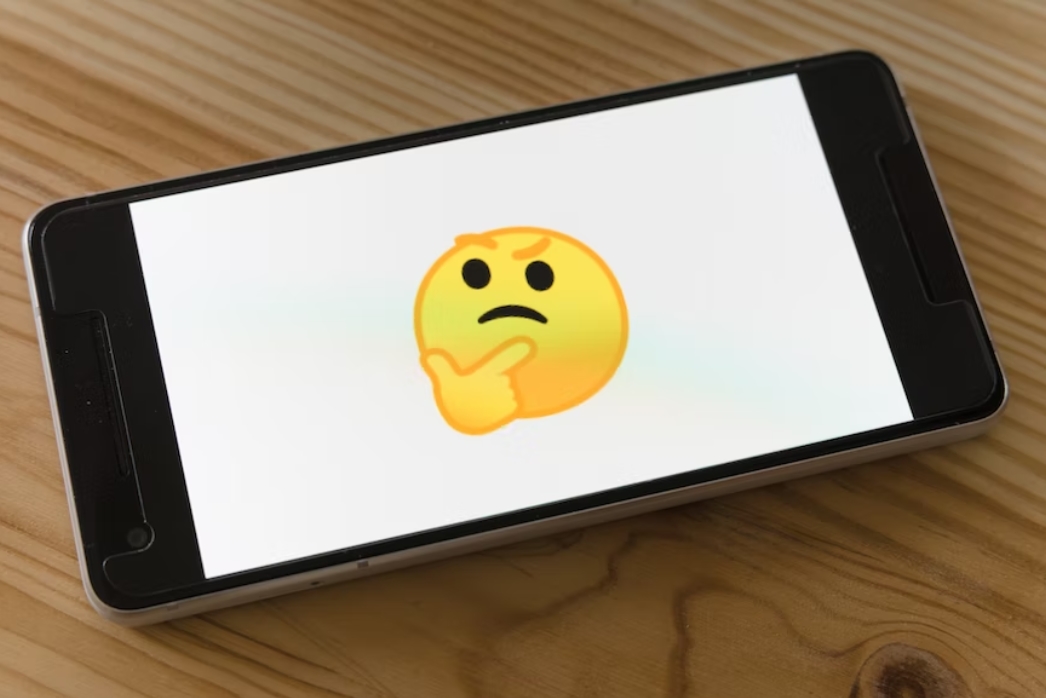
Source: Markus Winkler/Unsplash
But the truth is we will never know. The only people who can confirm the authenticity of the Isleworth are long gone, and those with the knowledge and expertise to grant it validity are still undecided.
